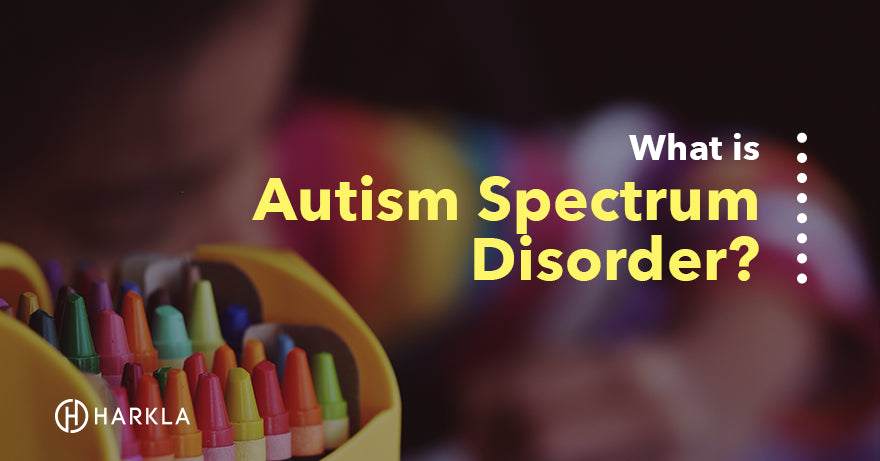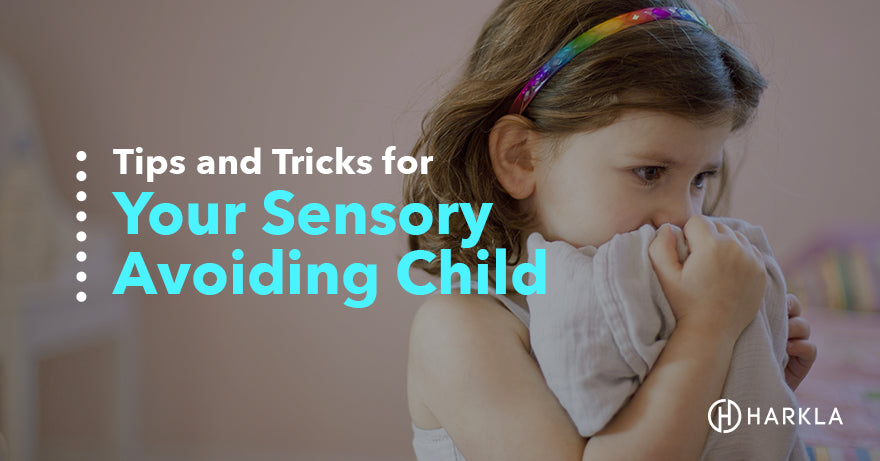Your Cart is Empty

Perhaps you’re reading this article to gain understanding about what is autism spectrum disorder whether as a supportive friend, curious neighbor, or concerned grandparent.
Perhaps you’re a parent hoping to gain some insight into your child’s development and concerned about your child possibly having autism.
Whatever your reason for wanting to inform yourself on autism, hopefully, this will provide you with the information you need to seek additional resources and be a more conscious citizen in your interactions with people on the autism spectrum.
Autism is a developmental disorder that is marked by social communication deficits and restrictive or repetitive behaviors. That seemingly simple definition is deceiving, however, because the wide range of autism spectrum disorders affects each person with autism differently.
In 2014, the U.S. Centers for Disease Control reported that 1 in 68 school-aged children were diagnosed with Autism Spectrum Disorder.
More recent statistics put that number much higher, reporting 1 in 40 children aged 3 and older have autism.
There are 3 million people in the United States with Autism and tens of millions worldwide with it.
This is a 1,000% increase in the last 40 years, with research showing that it can only partially be explained by better diagnosis and awareness.
In 2013, an estimated $305.6 million went towards autism research (disability scoop). These funds paid for research on causes of autism, treatments, diagnoses, and services, among other issues.
An autism diagnosis occurs across racial, socioeconomic, and ethnic groups. The latest research puts the incidence of autism as being 4.5 times more likely among boys than girls.
With autism being an increasingly common diagnosis, it’s likely that someone you know or have interacted with recently has been affected by autism - in their families, communities, or schools.

After an autism diagnosis, it is a common question for parents to ask: What caused my child’s autism?
The current answer is: There is no simple response.
Research points to a combination of potential causes of autism that may or may not play a role in the diagnosis.
Autism Speaks outlines three categories of risk factors that contribute to autism: genetic, environmental, differences in brain biology. Research supports that a combination of these risk factors results in autism but, just as every child with autism is different, potential “causes” or “combinations” of risk factors manifest differently for every child.
Here are some of the risk factors that research has supported:
Researchers are also investigating the potential risks associated with air pollution, and drug/toxic/heavy metal exposure prenatally, and reproductive assistance (IVF) for multiple births.
The Centers for Disease Control and Prevention is currently conducting a Study to Explore Early Development (SEED) across communities nationwide, to better understand potential risk factors for autism.
Hopefully, as additional research is funded and we learn more about the potential causes or risk factors associated with autism, a parent’s question can be answered with more clarity. Until then, there is no 100% clear answer which also means that autism is not a preventable diagnosis.
Your child’s pediatrician will screen your child for autism at well-check visits at 18-months and 24-months, however, parents should always communicate concerns about your child’s development whenever you have them! This American Academy of Pediatrics article outlines what a well-check screening for autism could look like.
 Image courtesy of CDC.gov
Image courtesy of CDC.gov
Signs of autism are categorized into social differences, communication differences, and behavioral differences (repetitive and obsessive behaviors). A skilled clinician who is trained in screening for autism will be able to explain how these differences go beyond some other “developmental delays.”
Here are some resources on the early signs and autism spectrum disorder symptoms:
If you continue to have concerns about your child and would like to pursue an autism screening by someone other than your pediatrician, you can contact your state’s Early Intervention or “Birth to Three” program.
Autism Speaks provides a state-by-state directory of Early Intervention programsthat will provide you with websites, phone numbers, and relevant information for your state of residency.
Remember that an autism screening does not result in a diagnosis of autism. If your child requires additional testing based on the findings of the screening, he/she will be referred to a specialist who is trained in the diagnosis ofautistic spectrum disorder.
Autism affects each person differently, but there can be challenges that show up in everyday life. These may include:
School and learning – needing extra support with communication, social skills, or classroom routines.
Friendships and social life – feeling isolated or misunderstood.
Work and independence – needing accommodations to succeed in a job or community setting.
Family stress – balancing therapy appointments, school meetings, and daily routines can be overwhelming.
Bullying or stigma – some children and adults face misunderstanding or unfair treatment.
It’s important to remember that challenges don’t define a person. With the right support, therapies, and understanding from others, many individuals with autism thrive and lead fulfilling lives.
In order to diagnose an autism spectrum disorder, a specially-trained clinician such as a child neurologist, neuropsychologist, psychologist, and/or developmental pediatrician will administer an evaluation that directly assesses your child’s skills in terms of social interaction, communication/language, and behaviors.
An evaluation for autism is typically comprised of observational data by a skilled clinician(s) and parent input in the form of a questionnaire.
Evaluations that are commonly used in an autism evaluation are:
The Autism Diagnosis Observation Schedule (ADOS) is the diagnostic tool that is most commonly used to evaluate a child for autism. The Child Mind Institute does a great job explaining each of these tools and what parents should expect from an autism evaluation - including key questions to ask of your clinician!
Autism Speaks provides parents with the most recently revised diagnostic criteria for Autism Spectrum Disorder as published by the Diagnostic and Statistical Manual of Mental Disorders (DSM-5) and we’ve outlined the basics of those criteria below.
Remember, regardless of what your child’s diagnosis is - whether they have an autism diagnosis, are awaiting an evaluation, or show signs of developmental delay, he/she can still receive skilled intervention and therapies.
Children with autism benefit from therapies to improve developmental skills including language, communication, social skills, motor skills, academic skills, and life skills.
Skilled clinicians work to set measurable goals and align therapeutic activities with those goals in order to help your child make progress. Examples of therapies that benefit children with autism are:
In addition to these therapeutic interventions, alternative autistic spectrum disorder therapy approaches have gained popularity for treating symptoms associated with autism. While many of the above-mentioned therapies for autism are deeply rooted in evidence-based outcomes and research, these alternative therapies may not be. As with any intervention, parents should consult their medical providers and weigh the potential risks of all proposed therapies.
At Harkla, we work to provide parents with resources and products to support their child’s developmental and sensory needs.
Sensory processing is a term that you will hear frequently when talking about your child’s preferences or aversions to certain sensory activities, highly specific interests in “sensory” toys, or need for sensory “tools” to help him interact more appropriately.
 Sensory processing is the way that our central nervous systems take information in through our body’s senses, internally process that information, and then allow us to respond appropriately.
Sensory processing is the way that our central nervous systems take information in through our body’s senses, internally process that information, and then allow us to respond appropriately.
When one’s central nervous system has difficulty processing any of this sensory information, the body’s responses are atypical and can be observed in motor, language, or behavioral skill difficulties. Occupational therapists diagnose these atypicalities as Sensory Processing Disorder or SPD.
The STAR institute estimates, based on their research, that 75% of children with autism have “significant symptoms of sensory processing disorder.”
For people with autism, the sensory processing dysfunction can manifest in language delays or deficits, fine and gross motor delays, strong sensory interests, sensory aversions, an inability to interact with people and objects, an inability to stay within an interaction, repetitive sensory stereotypies (stimming), and much more.
Now consider how many of those symptoms of sensory processing were also mentioned in the diagnostic criteria of the DSM-5.
When you do your research on which therapies may be appropriate to consider for your child with autism, you’ll recognize how many of the interventions provide a multi-sensory approach to programming by supporting sensory processing skills.
Many children with autism also experience other medical or developmental conditions. These are called co-occurring conditions because they happen alongside autism and may affect daily life. Some of the most common ones include:
ADHD – trouble focusing or sitting still.
Anxiety or depression – worries, fears, or sadness that last a long time.
Sleep difficulties – trouble falling or staying asleep.
Seizures or epilepsy.
Digestive issues – stomach pain, constipation, or picky eating.
Every child is unique, so co-occurring conditions can look different from one person to another. Knowing about them helps parents and caregivers get the right support in place.
Yes. Autism can show up in different ways depending on the person. Research tells us that boys are more likely to be diagnosed, but this doesn’t mean girls aren’t autistic. Girls may:
Mask or hide their struggles in social situations.
Have fewer repetitive behaviors, which can make their autism harder to notice.
Be misdiagnosed with something else, like anxiety.
For adults, autism is often missed in childhood. Many adults “mask” by copying social behaviors or hiding their challenges, which can delay diagnosis until later in life. Understanding these differences helps families and clinicians spot autism in people who may otherwise go unnoticed.

So, by now you’ve likely had your fill of facts, resources, statistics, and scary medical jargon. If you’re a visual learner, consider finding an engaging documentary that chronicles real people’s journeys - loving, learning, working, and living with autism.
Fortunately, autism is an increasingly common topic in film these days. This list of the 10 Best Documentaries about Autism is sure to inspire you!
There are many professional organizations that aim to educate parents on Autism Spectrum Disorder. Of course, any list would be remiss not to include Temple Grandin, easily the most influential woman with autism!
With statistics like ‘1 in 68 kids has autism,’ it’s important to educate yourself on what is autism spectrum disorder so you can better support children, families, and communities.
Be sure to check out the additional references in this article to continue your own research as it pertains to your child, loved one, or neighbor.
The Harkla blog is also a great place to find more information too!
Comments will be approved before showing up.

